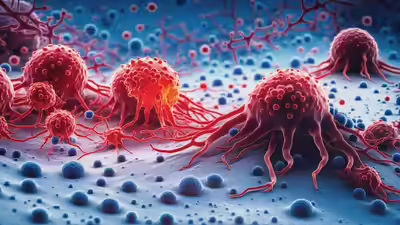Author: Zakir Hossain Personal website
Strategic Thinker, Law explainer, Voice of Reason and Author of ‘The Secret of Goal Setting to Success’
India faces a devastating healthcare challenge through inadequate cancer data mapping systems. Furthermore, comprehensive surveillance remains critically insufficient across diverse regions. Moreover, current registry coverage barely reaches twenty percent of the population. Consequently, millions remain invisible in official statistics. Undoubtedly, this situation demands immediate attention.

According to recent analysis, effective cancer data mapping transforms disease prevention strategies. Additionally, robust surveillance enables targeted interventions for high-risk populations. Therefore, immediate action becomes essential for improving infrastructure nationwide. Indeed, the current situation demands urgent transformation.
The Alarming Reality of India’s Cancer Burden
Recent Global Cancer Observatory data reveals India’s third-place ranking globally. However, the mortality-to-incidence ratio tells an even more disturbing story. Furthermore, India recorded 64.47 percent mortality rates in 2022. Meanwhile, this represents the highest ratio among top ten cancer-affected countries worldwide. Subsequently, urgent cancer data mapping improvements become critically necessary. Nevertheless, challenges persist across multiple domains.
Regional disparities paint a complex picture of disease distribution patterns. For instance, Mizoram reports lifetime cancer risks of 21.1 percent for males. Similarly, females face 18.9 percent lifetime risks in this state. In contrast, the national average hovers around eleven percent throughout India. Therefore, these geographical variations highlight comprehensive cancer data mapping importance. Undoubtedly, regional analysis becomes paramount for effective interventions.
As leading oncologists note, “Cancer surveillance requires systematic data collection from multiple healthcare sources.” Additionally, expert analysis emphasizes the critical role of accurate reporting systems. Furthermore, comprehensive cancer data mapping enables evidence-based policy formulation across regions. Clearly, professional consensus supports immediate system improvements.
Gender Patterns Reveal Hidden Truths
Remarkably, women account for fifty-one percent of registered cancer cases nationwide. Nevertheless, this statistic defies global trends and reflects reporting biases. Furthermore, breast and cervical cancers together represent over forty percent of female cases. Subsequently, these cancers receive better detection due to established screening programs. Notably, gender disparities affect surveillance effectiveness significantly.
Conversely, oral, lung, and gastric cancers among men often escape early detection. Similarly, many cases never enter official cancer data mapping systems effectively. Therefore, oncologists believe significant numbers remain unregistered in surveillance networks. Ultimately, this gender disparity undermines comprehensive cancer prevention efforts nationwide. Obviously, male-specific cancers require enhanced detection strategies.
Additionally, breast cancer accounts for 31.1 percent of female cases nationally. Meanwhile, cervical cancer represents 19.6 percent of diagnoses among women. Furthermore, these detection rates benefit from established screening infrastructure nationwide. Consequently, improved cancer data mapping reveals actual disease burden patterns accurately.
Regional Hotspots Demand Immediate Attention
Northeast India emerges as a critical concern in comprehensive cancer data mapping. Particularly, oral cancer burden reaches alarming levels across several northeastern states. Additionally, Aizawl district reports the highest age-adjusted incidence rates nationally. Meanwhile, this region requires targeted intervention strategies for effective prevention. Importantly, regional variations demand customized surveillance approaches.
Cities like Ahmedabad and Bhopal also show concerning oral cancer trends. Similarly, metropolitan areas reveal distinct cancer patterns requiring targeted responses. Furthermore, Delhi records the highest overall cancer rates among major urban centers. Therefore, localized cancer data mapping becomes essential for prevention programs. Significantly, urban cancer patterns differ from rural distributions.
Effective cancer data mapping must capture these geographical nuances appropriately. Moreover, targeted screening programs can address specific regional cancer burdens effectively. Additionally, community-based interventions require accurate local surveillance data for optimal implementation. Hence, regional analysis becomes crucial for cancer prevention strategies.
The Coverage Gap Crisis
Currently, ICMR cancer registries capture less than twenty percent of India’s population. Moreover, unlike tuberculosis surveillance, healthcare providers face no legal mandate. Additionally, cancer reporting requirements remain inconsistent across different states nationwide. Naturally, this creates significant data collection challenges.
Although seventeen states require hospitals to provide cancer data, major states lack requirements. Furthermore, Uttar Pradesh, Maharashtra, and Bihar remain without mandatory reporting systems. Therefore, this coverage gap severely hampers cancer data mapping effectiveness throughout the country. Evidently, legislative gaps undermine surveillance efforts.
Incomplete reporting undermines policy decisions and resource planning efforts significantly. Additionally, without comprehensive data, prevention programs cannot target high-risk populations effectively. Furthermore, survival rates remain suboptimal compared to developed nations worldwide. Consequently, enhanced cancer data mapping becomes essential for improving patient outcomes.
Medical experts emphasize, “Comprehensive cancer surveillance requires mandatory reporting from all healthcare facilities.” Additionally, policy makers recognize the urgent need for standardized data collection. Furthermore, enhanced cancer data mapping enables better resource allocation nationwide. Indeed, expert consensus supports immediate surveillance system improvements.
Technology Solutions for Enhanced Surveillance
Modern cancer data mapping requires technological innovation and systematic approaches throughout implementation. Meanwhile, digital platforms can streamline data collection from multiple healthcare sources. Furthermore, artificial intelligence can identify patterns and predict cancer trends effectively. Increasingly, technology transforms healthcare surveillance capabilities.
Electronic health records integration offers another promising avenue for improving surveillance systems. Similarly, mobile health applications can capture patient-reported outcomes and survival data. Therefore, investing in technological infrastructure becomes crucial for comprehensive cancer data mapping. Particularly, digital solutions enable real-time monitoring systems.
Additionally, cloud-based systems enable real-time data sharing between healthcare facilities nationwide. Moreover, automated coding systems reduce manual errors in cancer registry data. Furthermore, machine learning algorithms can detect reporting inconsistencies and improve data quality. Consequently, technology-enhanced cancer data mapping transforms surveillance capabilities significantly.
Policy Recommendations for Transformation
Immediate policy interventions must mandate cancer reporting across all healthcare facilities nationwide. Furthermore, state governments should implement uniform data collection standards throughout their regions. Additionally, financial incentives can encourage private healthcare providers to participate actively. Crucially, policy support determines system transformation success.
Training programs for healthcare workers represent another critical component for success. Moreover, standardized coding systems ensure data comparability across different geographical regions. Subsequently, regular audits can maintain data quality and completeness standards effectively. Finally, public-private partnerships can accelerate cancer registry expansion efforts nationwide.
Legal frameworks must establish cancer as a notifiable disease similar to tuberculosis. Additionally, penalties for non-compliance ensure healthcare facilities participate in cancer data mapping. Furthermore, regular monitoring systems can track reporting compliance across different states. Therefore, comprehensive policy reform enables effective surveillance nationwide.
Building Sustainable Surveillance Networks
Long-term sustainability requires strong political commitment and adequate funding mechanisms throughout implementation. Furthermore, cancer data mapping systems need integration with existing health information networks. Additionally, community health workers can enhance case finding in rural areas. Particularly, grassroots involvement strengthens surveillance effectiveness.
International collaboration offers valuable learning opportunities for improving surveillance systems effectively. Moreover, knowledge sharing with successful cancer registry models can accelerate implementation processes. Therefore, sustained investment in cancer data mapping infrastructure becomes essential nationwide. Likewise, global partnerships enhance technical capabilities significantly.
Community engagement programs can improve case reporting from remote areas significantly. Additionally, awareness campaigns educate healthcare providers about surveillance importance. Furthermore, regular training updates ensure consistent data quality across all registry sites. Consequently, comprehensive cancer data mapping requires multi-stakeholder collaboration for optimal results.
The Path Forward
Enhanced cancer data mapping holds the key to transforming India’s cancer control efforts. Furthermore, comprehensive surveillance enables evidence-based policy making and resource optimization effectively. Additionally, improved data quality facilitates international collaborations and research opportunities nationwide. Ultimately, robust surveillance systems save lives.
Therefore, immediate action must focus on expanding registry coverage and mandatory reporting. Subsequently, technological integration can streamline data collection and analysis processes efficiently. Finally, sustained political commitment ensures long-term success in reducing cancer mortality. Eventually, comprehensive cancer data mapping will transform disease prevention nationwide.
As healthcare leaders emphasize, “Quality cancer data mapping saves lives through early detection programs.” Additionally, enhanced surveillance enables targeted interventions for vulnerable populations. Furthermore, comprehensive cancer data mapping transforms disease prevention strategies nationwide. Indeed, the future of cancer control depends on robust surveillance systems.






